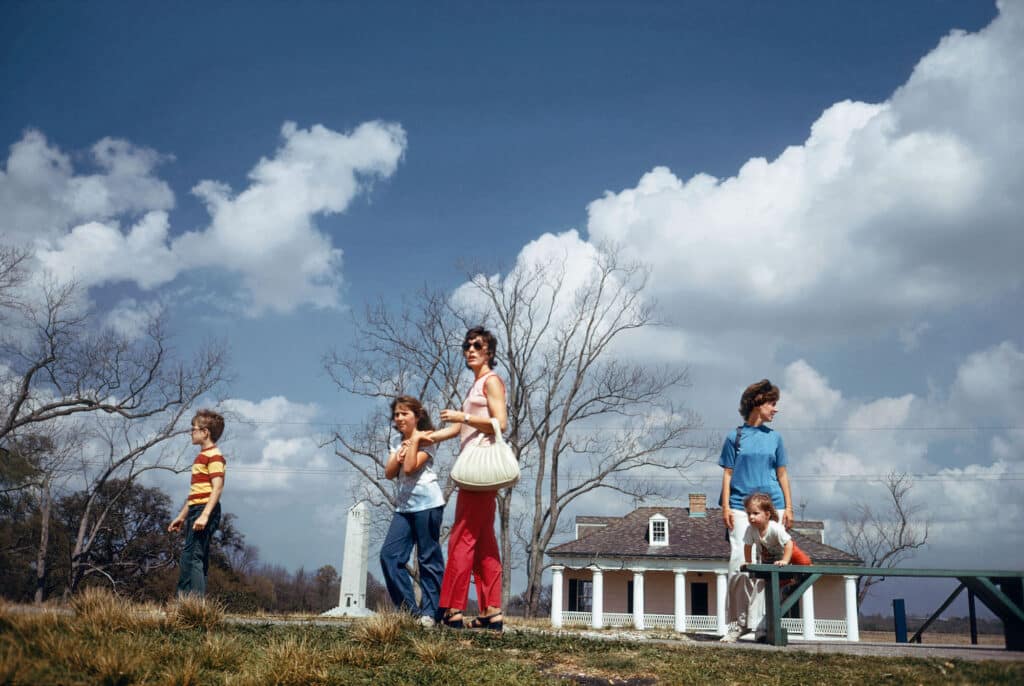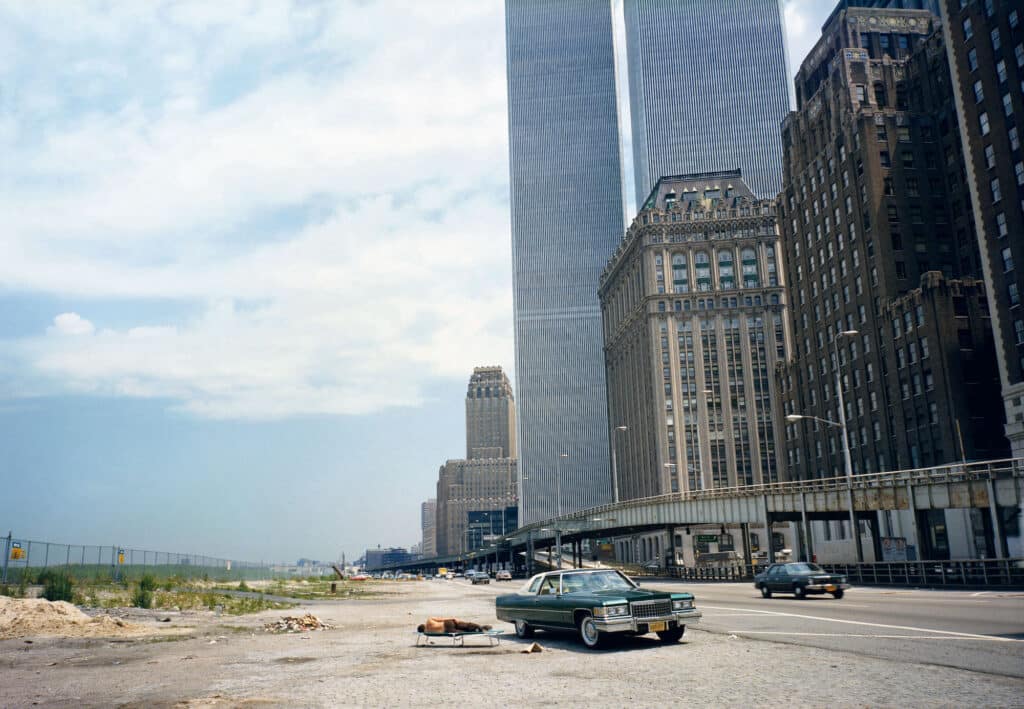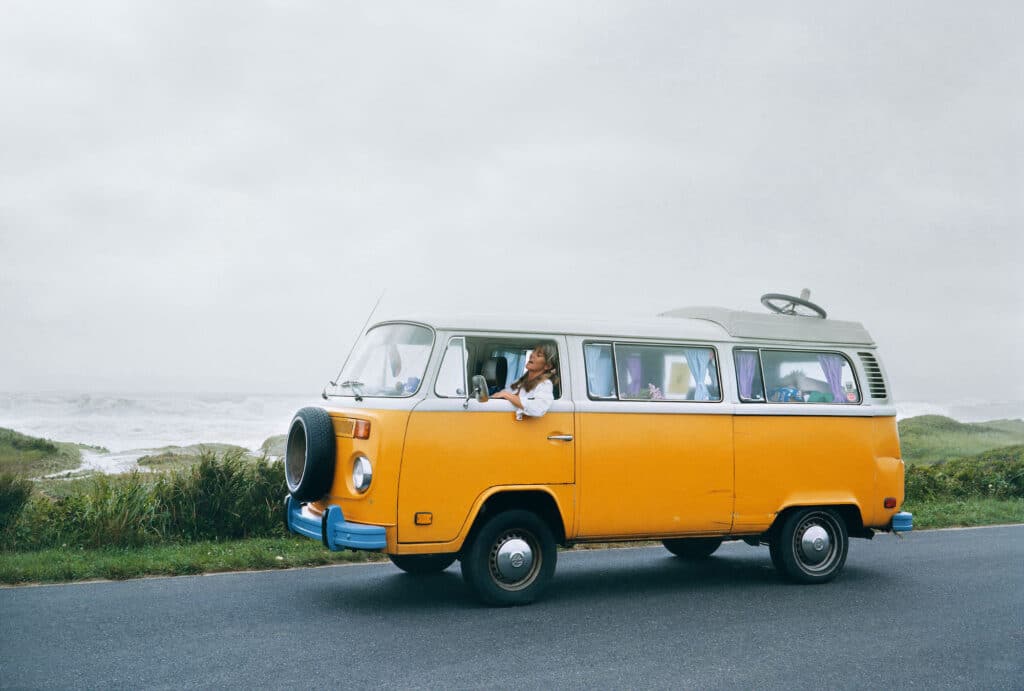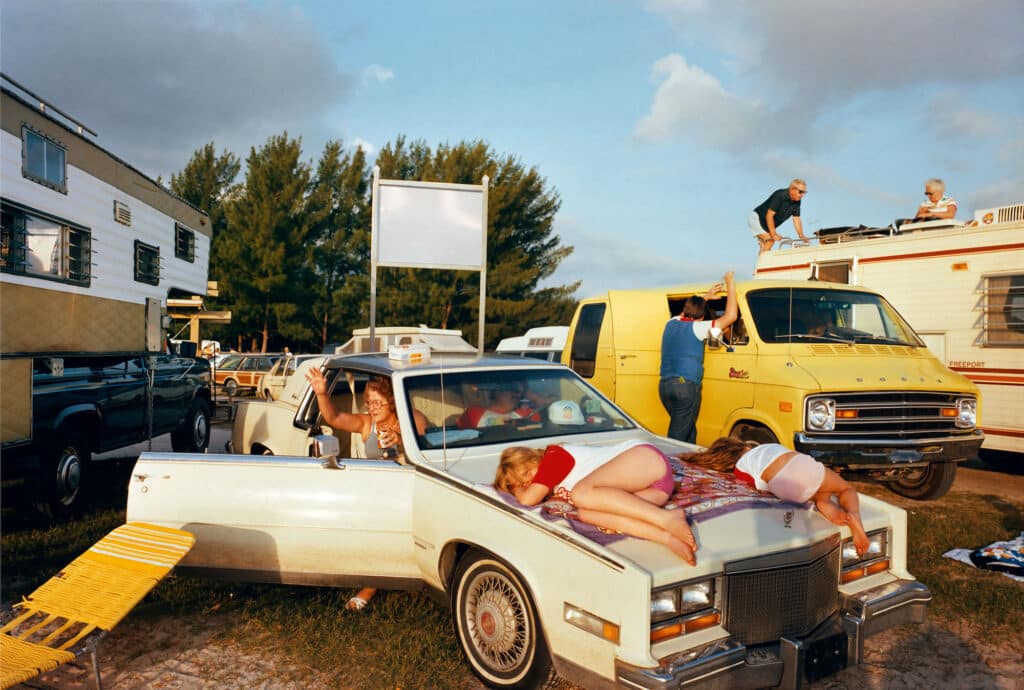Women in colorful dresses and with elegant hairstyles crouch on the sidewalk on Madison Avenue in New York. The first photo in Recreation captures the Zeitgeist and above all the fleeting nature of the moment. The handpicked images are like souvenirs of a bygone era. All have been newly processed, while remaining faithful to the vintage feel of 1970s’ and 1980s’ photography, and about a third are published for the first time.
This new edition of Recreation chronicles some twenty years’ journey to restore the negatives. Mitch Epstein reexamines his archive, identifying which of the images are “enduring” and which he can part with: “One of the benefits of having worked in this field for a long time is that the longer I’m in it, the clearer and more concise I am about what I want to do or not do.”
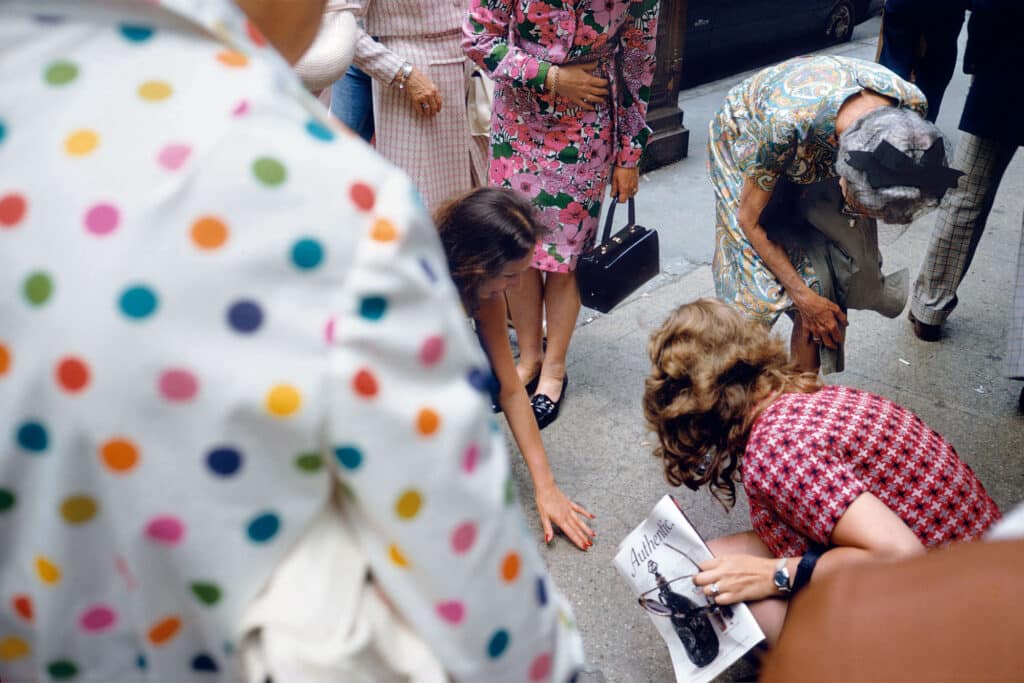
Post-digital era and local color
Inspired by American drive-in cinema, the first edition featured full-page images in an impressive format. “A lot of people complained that the book didn’t fit on their shelves!” This new edition, published by Steidl, is intended more as a traditional coffee table book. Besides the usual credits and captions, there is no text. Mitch Epstein did not consider text necessary: the pictures deal with various themes in an idiosyncratic way. Taken in the 1970s and 80s, they provide a portrait of modern America in a pre-smartphone era. They speak of another time, predating digital technologies, when things were less commodified. “Things was more innocent,” recalls the photographer. “Photography was more charming in a way.”
While the absence of text gives rise to a lot of possible narratives, Recreation tells the story of an era. The women on the cover are gazing into the distance; the little girl seems to be guiding her mother whose eyes are fixed on the Chalmette Battlefield, the site of the 1815 Battle of New Orleans. Behind them, there is the main house of an old sugarcane plantation which ran on slave labor. The picture seems simple at first glance. But in truth, it is full of history. Depending on their context, some images acquire new meanings over time. “When I took the picture of the man asleep on a cot next to an emerald Cadillac parked on the side of the West Side Highway, the World Trade Center towers were still standing; now they are gone.”
Painting a portrait of American society at leisure, the book also reflects the photographer’s relationship with the United States. Epstein’s work as a whole demonstrates his deep and passionate feelings about the country and its way of life. Documenting cultural change, he considers these images to be some of his best work of that period. “There’s a kind of evolution that speaks to my own maturity as an artist and photographer,” Epstein explains. “I find it very difficult to incorporate humor, irony, or wit into my current photographic practice. And it’s just wonderful that I was able to make it all come together at the time.”
“Recreation” must be understood both in the sense of leisure activity and creative renewal. “Photography means grabbing a camera and using it to represent something that is plucked from three-dimensional space, which you then flatten onto a two-dimensional plane. You see the world and you recreate the camera. The photograph, by the way it sees and describes that world, is then involved in an act of re-creation.”
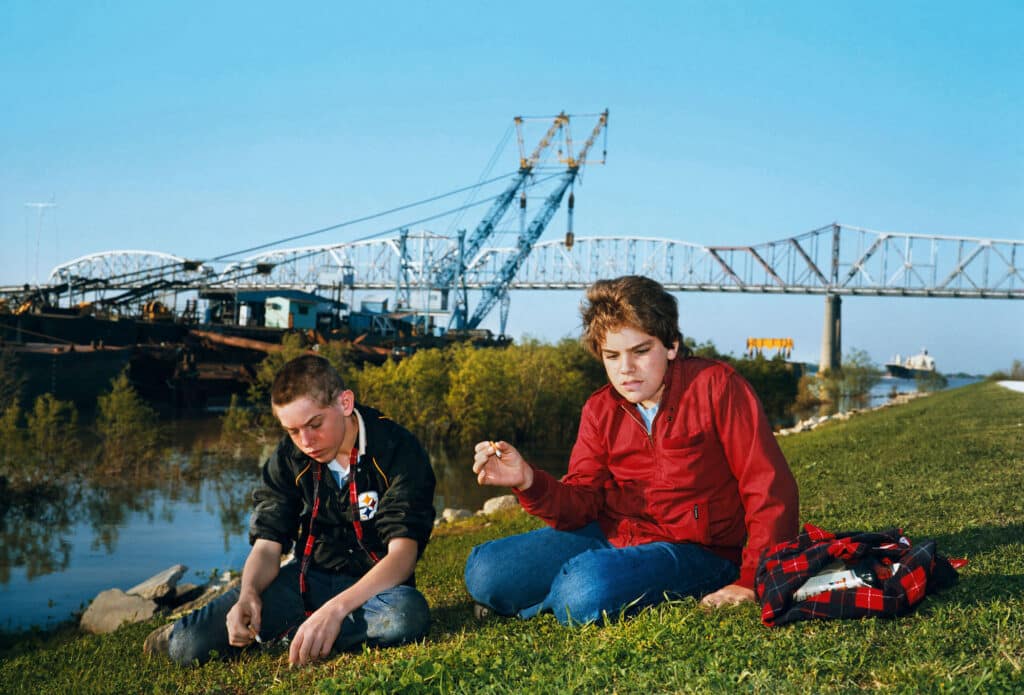
Color and cinema
The production of Recreation was a key moment in Epstein’s photographic quest. It was driven by Garry Winogrand, his mentor and teacher. Winogrand was a street photographer known for spontaneous images of people taken in public, especially in New York in the 1960s. Traveling from state to state, Epstein sought a way to photographically sculpt a situation into an image. When he began working on Recreation, he gravitated to places where people engaged in leisure activities. In a park, at a party, or on a street corner, he wanted his work to be almost unintentional.
As he went along, he didn’t even think of what he was supposed to be photographing. “To photograph you have to listen well. To listen not only with your ears, but also with your eyes and all your senses.” Remarkably fearless when it came to positioning his camera, Epstein offers an unvarnished view of free time. Uniting multiple elements into a kind of photographic harmony, his photos are “dramatic tableaus,” or what he terms “scenarios.”
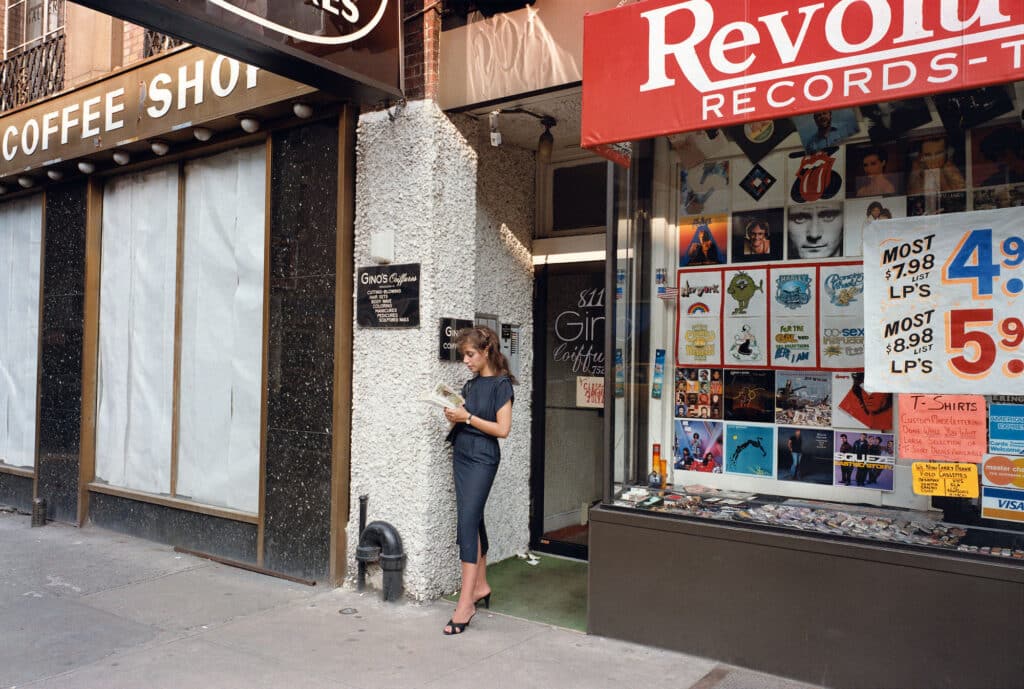
Many of his points of reference and influences are outside photography. He accords much importance to outside sources of inspiration, the main among them being cinema.
In the early 1970s, having just come of age, Epstein moved to New York, “an amazing city where you could go to the movies to see Rohmer, Truffaut, Renoir, all these great filmmakers who were in their prime.” He was fascinated by French cinema, in particular Godard and the New Wave, and by its use of color. Color was a formidable tool for magnifying emotion, but also for creating psychological tension, so Epstein decided to adopt it. The vitality of modern America really comes through in color.
Throughout his career, Epstein has used his relationship to art to ask questions, without necessarily seeking definitive answers. Although his practice is very disciplined, the photographer does not follow any formulas, always trying to keep an open mind. The images he considers formally most successful are those taken without any preconceived idea. His pictures would have been totally different if they had been taken a minute or two earlier or later. “Sometimes I would empty a whole roll of film and not keep a single picture,” he admits. “I’ve come to realize that sometimes images are a little ahead of me.”
Usually working with a 35-mm manual camera, Epstein opted for a 6×9 format halfway through Recreation. The technical maneuverability of the camera gave him more flexibility, and his approach became more self-conscious, more directed: “I felt a kind of freedom. More openness and agility. In this work, there’s a kind of raw energy and kinetic movement, it’s almost like a dance.”
Mitch Epstein, Recreation, 176 pages, Steidl, €75.00

